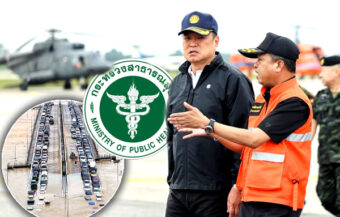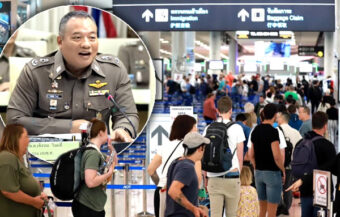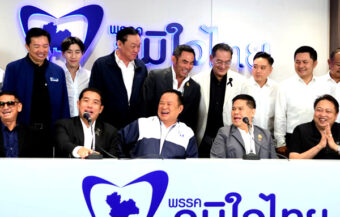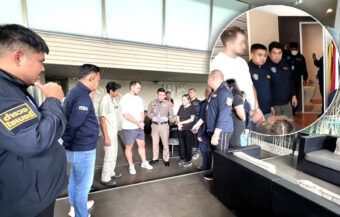Thai Airways rules out direct US flights despite its safety upgrade, citing high costs and past losses. Profitable code-share deals, strong Q1 earnings, and a planned stock market relisting keep the resurgent carrier focused on Europe and Australia instead.
Thai Airways has ruled out the return of direct flights to the United States. These services ceased in 2015 following a decision by the United States Federal Aviation Administration (FAA) to downgrade the kingdom to Category 2. That move came after safety concerns were raised about Thailand’s aviation sector. However, in April, the situation was reversed when Thailand was restored to Category 1 status. The decision, announced on Sunday, follows a review by the airline. At present, Thai Airways is performing well financially and is planning to return to the Stock Exchange of Thailand (SET) later in the summer. At the same time, it is focusing its expansion on the European and Australian markets. Nonetheless, the airline continues to offer flights to the United States and North America through its global partnerships. In fact, the effectiveness of these arrangements is one of the key reasons behind today’s decision.
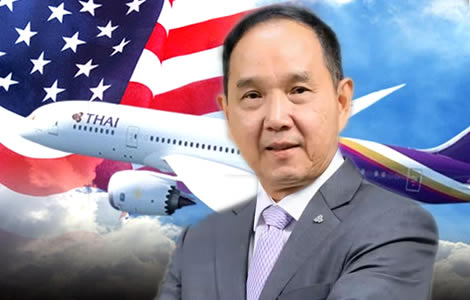
Thai Airways will not resume direct flights to the United States despite Thailand regaining its top safety rating. Long distances, high fuel costs, and past financial losses make the route unviable, according to the airline’s CEO. Chai Eamsiri, Chief Executive of Thai Airways International (THAI), confirmed the decision following the US Federal Aviation Administration’s (FAA) upgrade of Thailand’s aviation safety rating from Category 2 to Category 1.
Many observers had speculated that the upgrade might trigger a return to direct US flights.
Direct US flights ruled out again as Thai Airways opts to rely on partnerships with other airlines
But Mr. Chai quickly shot down that expectation. “We studied the possibility. But direct flights to the US are still not cost-effective,” he said. Instead, Thai Airways will continue offering connections through partner airlines via cities like Taipei, Tokyo, and Vancouver.
These code-share arrangements allow passengers to reach major US destinations, such as Los Angeles and San Francisco, without flying directly from Thailand. This model, Mr. Chai explained, reduces operational costs and limits risk exposure.
Thai Airways once flew direct to the US. In the 2000s, it operated non-stop flights to Los Angeles and New York. The airline used Airbus A340-500s and offered both non-stop and one-stop options via Tokyo.
However, the routes never turned a profit. Despite operating for a decade, the airline suffered repeated losses. Fuel costs were high, and competition was fierce. Eventually, THAI dropped its final US route in 2015.
That year, the FAA downgraded Thailand’s aviation safety status to Category 2. The decision followed a critical audit of Thailand’s civil aviation oversight. It also blocked Thai carriers from launching new US routes.
Thai Airways sticks with the code-share model even after safety status was restored by the United States
The downgrade triggered a strategic shift. Thai Airways pivoted to indirect flights via global airline partners. Code-sharing allowed it to stay in the market without the financial burden of long-haul operations.
Mr. Chai said this approach will continue. “Even without direct service, we provide seamless connections to US cities,” he noted. These partnerships ensure coverage of key routes without restarting loss-making operations.
He also said there are no plans to reverse course, even with the recent safety upgrade. “The distance remains a problem. The economics just don’t work,” he explained.
Meanwhile, Thai Airways is flying high in other ways. The airline reported a strong first quarter in 2025. It posted a profit of ฿9.8 billion—roughly $298 million. That figure marked a 300% surge year-on-year.
Passenger numbers also jumped. The airline carried 4.33 million people in Q1, an 11.6% increase from the previous year. Revenue hit ฿51.6 billion ($1.56 billion), up 12.3%.
Thai Airways records strong first quarter with surging profits and increased passenger traffic in 2025
Crucially, Thai Airways is now preparing to exit its court-supervised rehabilitation plan. The airline filed a request to terminate the plan on April 28. A court hearing is set for June 4. If approved, THAI expects to relist on the Stock Exchange of Thailand in the third quarter.
The rehabilitation process began after years of crippling debt and operational inefficiencies. However, Mr. Chai and his team have led a dramatic turnaround.
Thai Airways has also expanded its fleet. It will grow from 77 to 81 aircraft in 2025. Deliveries will include one Airbus A330, one Boeing 787-9, and two Airbus A321neos. These jets are expected to arrive by late 2025.
By 2026, the airline expects 15 more aircraft. All new planes will feature personal entertainment systems and free in-flight Wi-Fi for Royal Orchid Plus members.
Piyasvasti Amranand, Chairman of the Business Rehabilitation Plan Administration Committee, said these upgrades aim to improve service and competitiveness. “Passenger experience is central to our strategy,” he said.
Thai Airways to exit rehabilitation and expand fleet as passenger upgrades roll out across services
Meanwhile, THAI has begun retrofitting older aircraft with high-speed internet. Two Airbus A330-300s are already equipped. The service includes free unlimited chat and messaging for all passengers.
From May 1, full internet access became free for Royal Orchid Plus members, depending on their tier. These changes form part of THAI’s wider post-rehab service strategy.
Leadership changes have also taken place. Following an Extraordinary General Meeting in April, a new board was appointed. The Ministry of Commerce registered the board on April 22.
The new directors include two government officials: Lawan Saengsanit, Permanent Secretary of the Ministry of Finance, and Dr. Kulaya Tantitemit, Director-General of the Excise Department.
Once the court ends the rehabilitation plan, this new board will take full control. Their tasks include electing a chairman, forming an audit committee, and preparing for the SET relisting.
However, Piyasvasti warned that relisting is not without risk. “Market volatility is a concern. Investor expectations are also high,” he said. Still, he remains optimistic about Thai Airways’ outlook.
Free onboard Internet and a new board of directors mark post-rehab strategy ahead of stock relisting
The airline recently dissolved Thai Smile Airways, its low-cost subsidiary. Thai Smile’s aircraft and operations have been fully integrated into THAI. The move aims to reduce redundancy and simplify services.
As of January 1, 2024, Thai Smile ceased operations. The fleet of Airbus A320s now flies under THAI branding.
Looking ahead, Thai Airways expects continued growth in Q2. Despite it being the low season, forward bookings are strong. The airline predicts solid demand, especially from Australia and Europe.
The Australian market is rebounding, with travel expected to peak in July and August. This coincides with Europe’s summer holidays, traditionally a busy travel period.
With Thai Smile absorbed and bookings strong, Thai Airways eyes seasonal boost from Europe and Australia
With these factors in play, Thai Airways expects increased revenue and passenger volume in the second half of 2025. Confidence is growing that the airline can sustain profitability.
Still, not everyone is cheering. Thai Airways’ labour union recently raised concerns about possible government interference. The People’s Party also questioned recent board appointments and restructuring decisions.
Thai Airlines flies high. Plan to exit rehabilitation plan at the end of June with a stock market relisting
Thai Airways union protests government ‘interference’ in its recovery plan at a critical juncture
People’s Party economic head questions the government’s plans for Thai Airways after new moves
Even so, the outlook remains positive. Thai Airways is no longer burdened by the losses of its US routes. It is now leaner, more efficient, and more focused on profitability.
For now, there will be no direct return to America. But Thai Airways appears firmly on course and flying high—after a successful return to profitability in the skies.
Join the Thai News forum, follow Thai Examiner on Facebook here
Receive all our stories as they come out on Telegram here
Follow Thai Examiner here
Further reading:
Thai Airways union protests government ‘interference’ in its recovery plan at a critical juncture.
People’s Party economic head questions the government’s plans for Thai Airways after new moves
Thai Airways to refloat on Stock Exchange in June 2025 with a renewed mission as national carrier
Passenger complaint turbulence as Thai Airways appears to plot sky-high Dreamliner expansion
Passengers to finally get refunds from high-flying Thai Airways still facing financial turbulence
Flying high at Thai Airways as numbers skyrocket as it flies tourists into the kingdom from Europe




